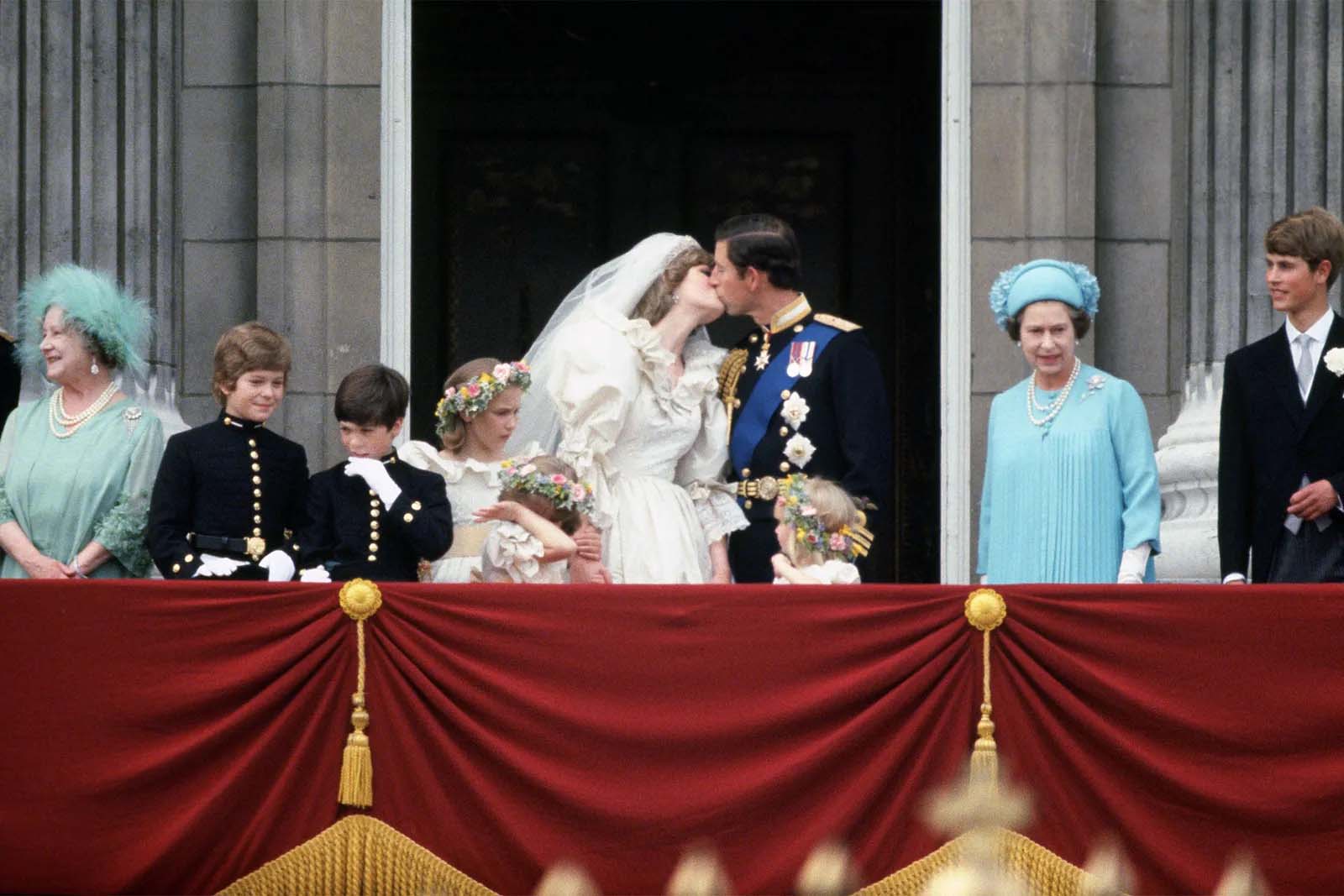
History-Periods
Past eras

From pre-history to today
Choose your period

Periods of History
explore the different eras
 The Royal Wedding of Prince Charles and Lady Diana, held on July 29, 1981, was a grand and highly anticipated event that captivated the world's attention. Here's an overview of the planning, activities, and steps taken during the wedding day:
The Royal Wedding of Prince Charles and Lady Diana, held on July 29, 1981, was a grand and highly anticipated event that captivated the world's attention. Here's an overview of the planning, activities, and steps taken during the wedding day:
Planning:
The planning for the wedding began several months in advance. Lady Diana Spencer, a young kindergarten teacher, was engaged to Prince Charles, the heir to the British throne, on February 24, 1981. The wedding took place at St. Paul's Cathedral in London, chosen for its size and historical significance. The Dean of St. Paul's, Alan Webster, conducted the ceremony.
Activities:
The wedding day was filled with various activities and traditions. Here are some of the notable moments:
The Procession: Lady Diana arrived at St. Paul's Cathedral in the iconic Glass Coach, accompanied by her father, Earl Spencer. The procession was watched by millions of people who lined the streets of London to catch a glimpse of the bride.
The Ceremony: The wedding ceremony itself was a blend of royal tradition and modern touches. Lady Diana wore an ivory silk taffeta gown with a 25-foot train, designed by David and Elizabeth Emanuel. The couple exchanged vows and rings, and Diana was given a sapphire and diamond engagement ring.
The Music: The wedding featured a selection of music, including traditional hymns and classical pieces. The renowned English composer, Sir William Walton, composed a special fanfare for the occasion. The ceremony also included performances by the Choir of St. Paul's Cathedral and the Orchestra of the Royal Opera House.
The Kiss on the Balcony: Following the ceremony, the newly married couple appeared on the balcony of Buckingham Palace to greet the crowds. The iconic moment came when Prince Charles and Princess Diana shared a kiss, which was met with cheers and applause from the enthusiastic spectators.
Popularity and Impact:
The Royal Wedding of Charles and Diana garnered immense popularity and media attention worldwide. It was estimated that around 750 million people watched the wedding on television, making it one of the most-watched events in history. The fairytale-like quality of the event, combined with Diana's charm and beauty, made her an instant global sensation.
The wedding had a significant impact on popular culture, setting trends and influencing wedding styles for years to come. Diana's wedding dress, with its extravagant train and puffed sleeves, inspired countless brides-to-be, and her elegant style became a fashion phenomenon.
Steps During the Wedding Day:
The wedding day followed a carefully planned schedule. Here are the main steps:
Morning Preparations: Lady Diana stayed at Clarence House, the residence of Queen Elizabeth the Queen Mother, the night before the wedding. She prepared for the ceremony with the help of her bridesmaids and stylists.
Procession to St. Paul's Cathedral: Lady Diana and her father, Earl Spencer, departed from Clarence House in the Glass Coach, making their way to St. Paul's Cathedral through the streets of London.
The Wedding Ceremony: The ceremony took place at St. Paul's Cathedral, where the couple exchanged their vows and were officially married.
The Balcony Appearance: After the ceremony, the couple made their way to Buckingham Palace, where they appeared on the balcony to greet the crowds and share a kiss.
Wedding Breakfast and Reception: A formal wedding breakfast was held at Buckingham Palace, followed by a reception attended by around 120 guests, including heads of state, dignitaries, and close friends and family.
The Royal Wedding of Prince Charles and Lady Diana remains an iconic moment in history, symbolizing hope, romance, and the merging of tradition and modernity. However, their marriage eventually faced difficulties, leading to their separation.
The history of Royal Weddings is rich and spans centuries, with each event reflecting the customs, traditions, and societal norms of its time. Here is an overview of the history of Royal Weddings:
Medieval and Renaissance Era: Royal weddings during the medieval and Renaissance periods often served political alliances and were arranged for strategic purposes. They were elaborate affairs, filled with lavish ceremonies, feasts, and celebrations. Examples include the marriage of King Henry V of England to Catherine of Valois in 1420 and the union of King Ferdinand II of Aragon and Queen Isabella I of Castile in 1469, which united the kingdoms of Spain.
Victorian Era: The Victorian era brought a change in the nature of Royal Weddings. Queen Victoria, who reigned from 1837 to 1901, set the tone with her own wedding to Prince Albert in 1840. Her wedding popularized the white wedding dress, which symbolized purity and became a lasting tradition. Victorian Royal Weddings emphasized family values, modesty, and a strong sense of tradition.
20th Century: The 20th century saw several significant Royal Weddings that captured public attention. The wedding of Queen Elizabeth II (then Princess Elizabeth) and Prince Philip, Duke of Edinburgh, in 1947 brought a sense of joy and hope to post-World War II Britain. The wedding of Prince Charles and Lady Diana Spencer in 1981 became a global media sensation and attracted enormous public interest.
Modern Era: In recent years, Royal Weddings have continued to captivate audiences worldwide. Prince William, Duke of Cambridge, married Catherine Middleton (now Duchess of Cambridge) in 2011. Their wedding showcased a blend of tradition and modernity, and millions of people around the world tuned in to watch the ceremony. Prince Harry, Duke of Sussex, married Meghan Markle (now Duchess of Sussex) in 2018, marking another significant moment as it represented a more diverse and inclusive royal union.
Royal Weddings often involve a series of events leading up to the main ceremony, including engagement announcements, processions, religious ceremonies, and receptions. They showcase grandeur, tradition, and pageantry, symbolizing the continuity of monarchy and the role of the royal family in society.
These weddings also have a significant economic impact, boosting tourism and generating global interest in the host country. They serve as cultural milestones, providing moments of celebration and unity for the public. Royal Weddings continue to be cherished occasions that blend history, romance, and tradition in a captivating and meaningful way.
Following their grand wedding, Prince Charles and Princess Diana's marriage encountered various challenges and difficulties. Despite the initial excitement and public adoration, the couple struggled with issues that eventually led to their separation and subsequent divorce. Here are some additional details:
Age Difference: Prince Charles was 12 years older than Lady Diana, and they had varying interests and backgrounds. The age gap, combined with their differing personalities, created a strain in their relationship.
Incompatibility: Charles and Diana had different temperaments and interests. Charles was passionate about his work and had an affinity for outdoor pursuits, while Diana was more interested in social causes and charitable endeavors. This mismatch led to difficulties in finding common ground.
Media Pressure: The intense media scrutiny and constant intrusion into their private lives took a toll on both Charles and Diana. Their every move was documented and analyzed, causing significant stress and strain on their relationship.
Extramarital Affairs: Both Charles and Diana had extramarital affairs during their marriage, which further strained their relationship. Charles had a long-standing affair with Camilla Parker Bowles, who later became his second wife, Duchess of Cornwall. Diana also had affairs, most notably with James Hewitt.
Emotional Distance: As their marriage deteriorated, Charles and Diana grew emotionally distant from each other. They had difficulties communicating and connecting on a deeper level, leading to feelings of loneliness and dissatisfaction.
Public Expectations: The pressure to conform to traditional royal expectations weighed heavily on both Charles and Diana. Diana, often referred to as the "People's Princess," struggled with the intense public scrutiny and struggled to find her place within the royal family.
Separation and Divorce: Charles and Diana announced their separation in December 1992, after years of marital turmoil. Their divorce was finalized in August 1996, with Queen Elizabeth II urging them to divorce as it was deemed necessary for the well-being of the monarchy.
Tragically, Princess Diana passed away in a car accident on August 31, 1997, which deeply impacted the public and marked a significant moment in history. The marriage between Prince Charles and Lady Diana serves as a reminder of the complexities that can arise within high-profile relationships and the challenges of navigating personal and public expectations.
Reference: Article by Greg Scott (Staff Historian), 2024
Tour Reviews
History Attractions
Submit Tour Suggestions
2024 Departures
Spotlight Tours
Events and anniversaries

All content and images are protected by copyright to Access History